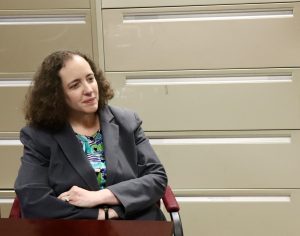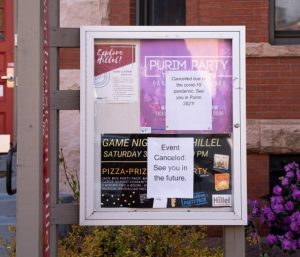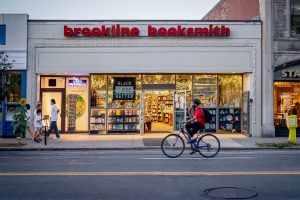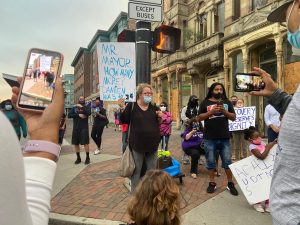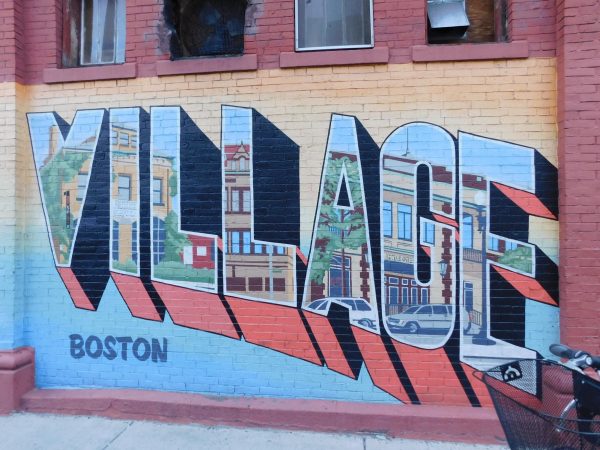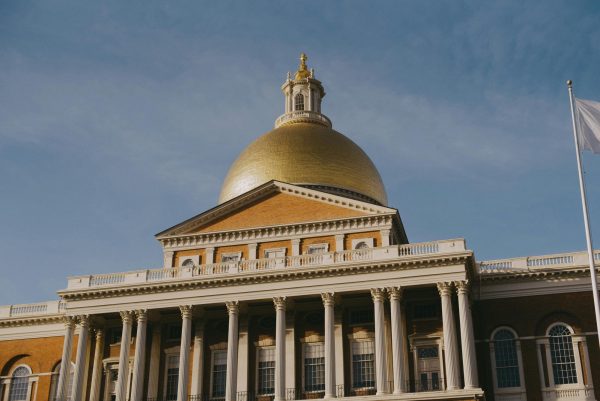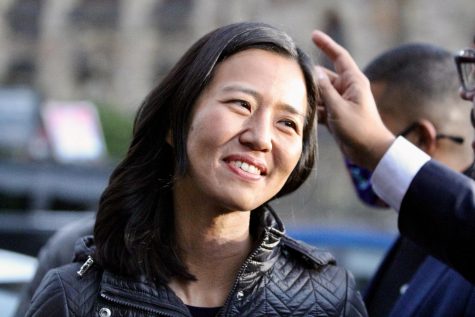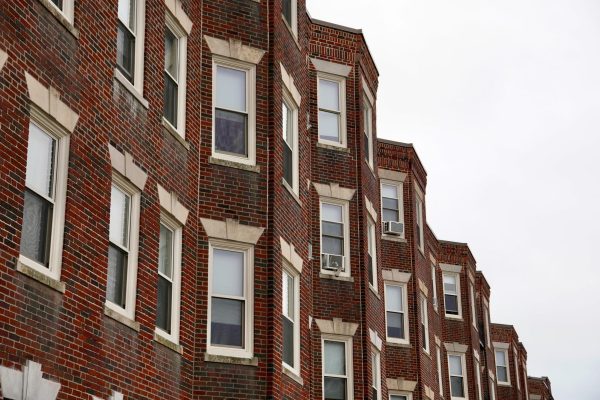Jewish community faces challenges to maintain a community environment as the pandemic persists
Friday night services at the Boston Synagogue would normally be followed by a Shabbat feast, where congregants would enjoy each other’s company and catch up on what’s happened during the week.
Now, at the end of the Friday night services over Zoom, Michael Weingarten, a member of the synagogues executive committee, remains on the open line for “virtual dinners” so that members of the congregation still have that sense of community.
Weingarten said his wife “would typically invite six, seven, eight people over for dinner to a bunch of empty nesters, and that was an important part of our life too. So what we decided to do was to announce that at the end of Friday evening services we leave the Zoom link on and invite people to join us for Zoom dinner.”
Religious organizations throughout the world shut down in March, 2020 due to the COVID-19 pandemic. Jewish organizations preparing for Passover worked quickly to try and find a way to adapt to the pandemic. As a communal religion, Judaism had some distinct challenges to work through.
“Judaism is so communally based. Our theology is communal, we pray in the communal, we say our God, not my God,” said Rabbi Elizabeth Bonney-Cohen. “We require a physically present minyan, to say certain prayers, we are very much a communal religion, and so not being able to gather communally. There’s a real palpable loss in that.”
Rabbi Bonney-Cohen helps run Base BSTN, an organization for Jewish people in their early 20s and 30s to connect to other Jews and establish what their Jewish identities look like as adults.
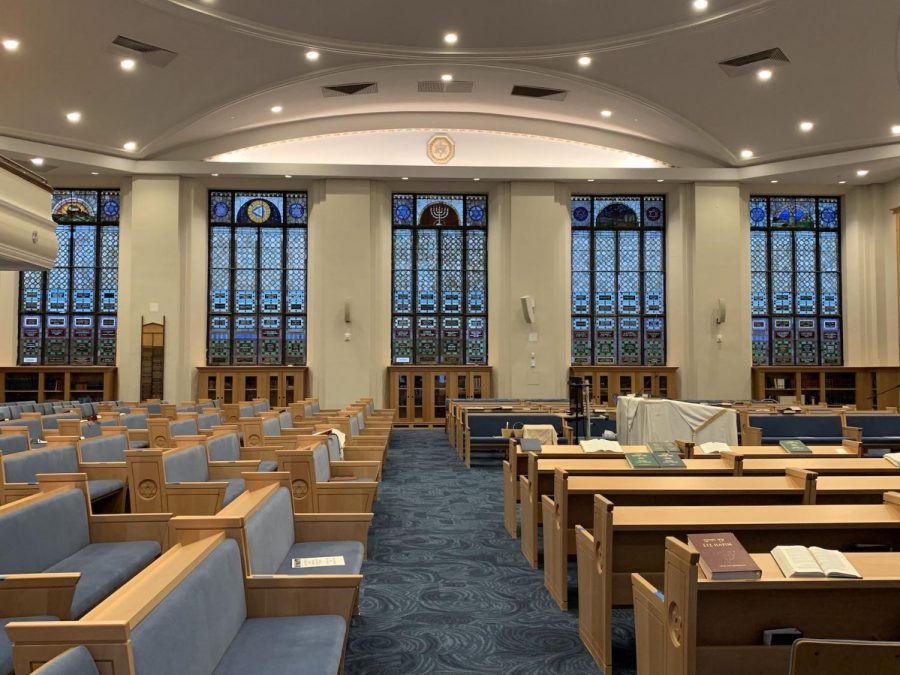
Religious organizations have continued to limit gatherings to protect their members. As major holidays came and went, religious institutions like synagogues had to find ways to operate safely without losing the integrity of what makes a religious community so special.
“We’ve seen all over the US and internationally that churches, houses of worship, etc. are sites of super spreader events because that’s one of the consistent places where you have large gatherings of individuals,” said Samuel Scarpino, a professor at Northeastern University who has expertise in bioinformatics, who is an expert in what constitutes a super spreader event.
Many houses of worship, including ones in Boston, transitioned to online programming over Zoom. But they have experienced some difficulties, like keeping everyone on the same page, literally.
“We have lots of prayer books [or] siddurs at the synagogue, but if everyone is calling in, a number of people may not have those books,” said Weingarten.
Prior to the pandemic, there was never a digital version of the prayer book, also known as a siddur, that the Boston Synagogue used. Leaders of the Conservative Movement later published a digital version of their siddur back in March 2020 so synagogues across the country could use it.
Even organizing virtual services was originally an issue. In certain forms of Judaism, technology isn’t supposed to be used on Shabbat and other key holidays. The Rabbinical Assembly ended up releasing a ritual guide to virtual services to give a clear guideline on how technology could be used for prayer during the pandemic, along with a ruling on why using technology to stream services would be acceptable at this time.
“What we were trying to do there was give the community, the global community, a sense that they were in a community and that we could be studying Torah together, because by May we were all sort of in this like desperate, I’m freaking out kind of time,” said Rabbi Ilana Garber, the director of Global Rabbinic Development at the Rabbinical Assembly.
Services are one part of the Jewish community, but the community is made up of a lot more.
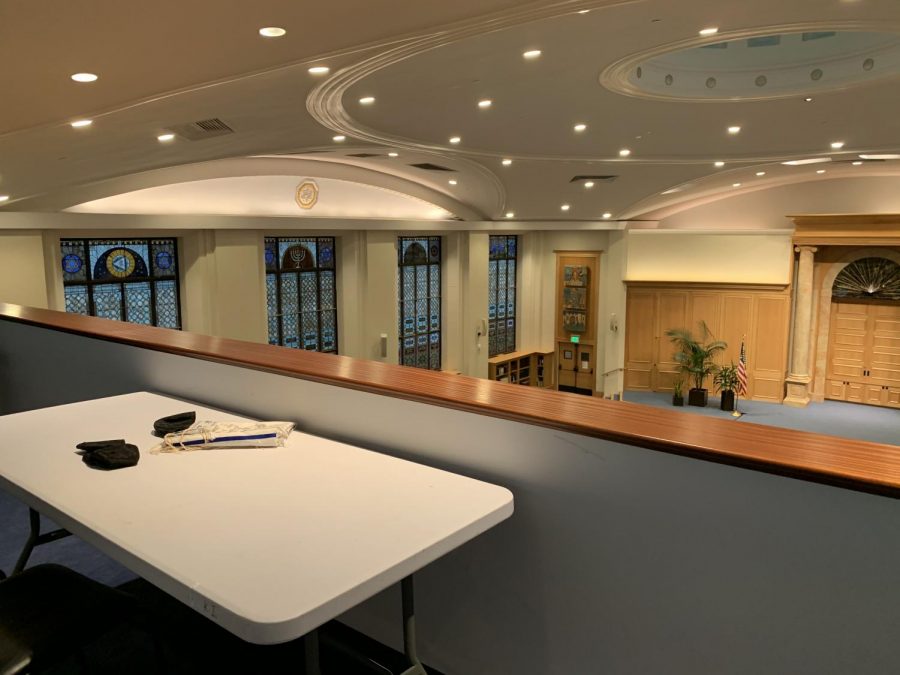
“They would be, you know, this half a dozen different congregations and independent minyanim [a gathering of 10 or more Jewish adults necessary for some religious services] meeting under the roof, and coming together like for afternoon kiddush [sharing of food and drink after a religious service],” said Barnet Kessel, the executive director of Congregation Kehillath Israel, about how his synagogue looked before the pandemic. “And there’d be like 200 people, maybe more, depending on you know what was going on that week.” That vibrant Brookline Community had to adapt.
Now, the synagogue remains empty with the giant sanctuary, which normally seats up to 400, limited to only 25 people for services. In order to keep a sense of community for the members of the synagogue, Kessel and the rest of the staff at Kehillath Israel got creative.
“Okay, we can only be in this room for 90 minutes, let’s move now to this other room, while the first room has to lay fallow for 30 minutes, while we blast the HVAC to clean the air as much as possible,” Kessel said. “And everyone just for the most part, is, is rolling with it.”
According to Scarpino, these regulations are some of the best ways to minimize the risk of having in person services during the pandemic, short of cancelling the events altogether.
Each of these institutions had the freedom to choose how they would operate during the pandemic, while still adhering to state guidelines. Due to a recent Supreme Court decision, nationwide regulations have changed. Officials from Governor Baker’s office believe that Massachusetts’s current restrictions, which include capacity limits, required distancing and face coverings, are in line with the new Supreme Court decision.
On Nov. 25, The Supreme Court ruled in a 5-4 vote that New York could not limit the amount of people who wish to attend religious services during the pandemic, as doing so went against religious freedom and the restrictions proposed by Governor Andrew Cuomo were too strict. This vote was highly controversial, as many U.S. citizens believe that religion should not be an exception to pandemic regulations. How much of an effect this ruling will have is still being debated.
“If there’s a house of worship that wants to keep its members safe from COVID, they are likely already limiting the number of individuals,” said Scarpino. “Whereas others may have already been having large gatherings anyways, and they’re just going to continue to do what they would do.”
In April, not long after the start of the pandemic, the Jewish community celebrated Passover, a major holiday. Passover is normally celebrated with a big meal, known as a seder, with lots of family, but it looked vastly different this year.
“Passover, at least for me growing up, wasn’t about the synagogue,” Richard Weinstein, a member of the board of trustees at Kehillath Israel in Brookline, said. “Yes, there are services and going to synagogue, but to me the focal point of Passover was always the seder at home.”
In late September and early October, the two most important holidays in Judaism occurred, Rosh Hashanah and Yom Kippur, often referred to as the High Holidays. Normally High Holidays are the largest days for synagogue attendance, but this year they were mostly virtual. For those who did attend services in person, they were encouraged to not sing as to not spread more germs.
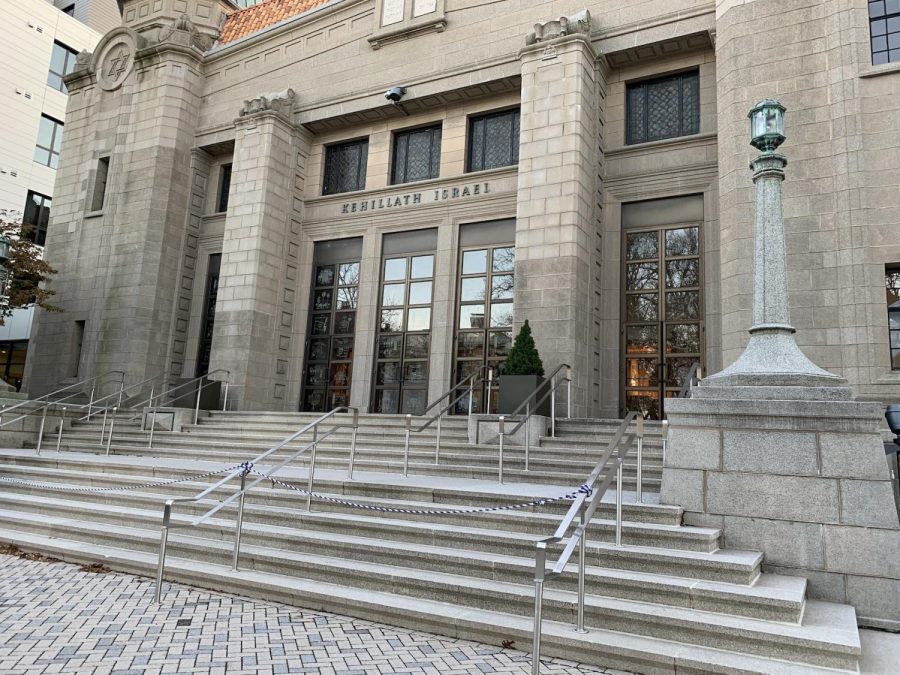
One of the key traditions of the High Holidays is the blowing of the shofar, a ram’s horn. With limitations on singing, blowing the shofar seemed much more dangerous. But Kehillath Israel had a creative solution to that problem.
“We had the person sounding the shofar actually on the rooftop, outside of the synagogue,” Weinstein said. “And, you know some people could go outside and walk up and hear, you know, hear the sound, you know, be able to hear the shofar live if they wanted to.”.
For Arielle Greenspan, a fourth year theater and communications student at Northeastern University, holidays normally meant spending time with her family, but this year it felt disconnected.
“I remember sitting in my room, at one point, or midday, I’m like crying because I was so upset that I didn’t even have the opportunity to celebrate Rosh Hashanah,” said Greenspan.
However, overall there seems to be higher levels of attendance at synagogues with the ability to join virtually.
As part of Base BSTN, Rabbi Bonney-Cohen hosts classes about different aspects of Judaism, like what it means to keep kosher and other mitzvot. Before the pandemic, these were held in her home. Now they occur over Zoom, allowing more people to attend. Previously, only 16 people could attend a class due to space in the home. In a recent class about the shofar, 25 people showed up weekly.
“I think in the beginning, people just wanted to see other people’s faces,” said Rabbi Bonney-Cohen. “And they were willing to join these, like really big Zoom calls, just to see other human beings existing in the world. And that was really comforting.”
Even events that don’t tend to have high attendance seem to be growing exponentially.
“Typically most synagogues that might get, let’s say 150 on Shabbat, might get 15 on Selichot, not the most popular night of Jewish observance,” said Rabbi Garber. “And we have like 24,000 views on our programming on Selichot. That is way more Jews than ever go to synagogue.”
While many synagogues are citing an increase in attendance with virtual programming, a research study from Pew suggests that this will not last. Polling data suggests that most people will return to their pre-pandemic religious habits when the pandemic ends.
Rabbi Bonney-Cohen is hopeful about how the Jewish community dealt with the pandemic. “But I think overall, you know, the Jewish communities persisted through much worse. And I think that, I think that we’re doing pretty well, staying afloat and adapting to this new reality.”



